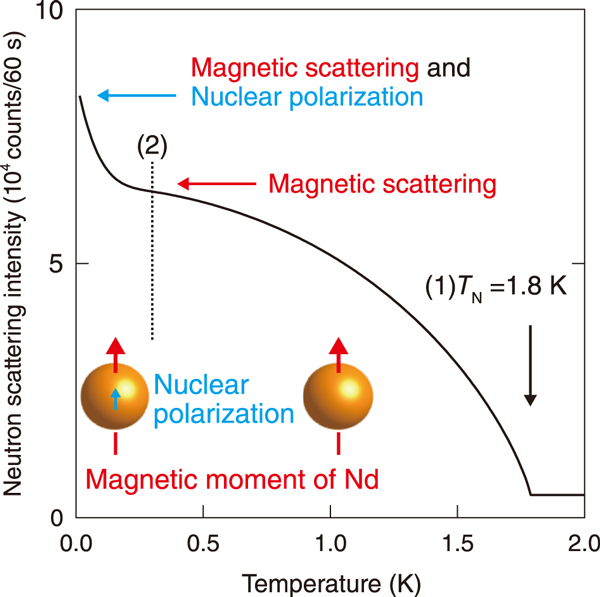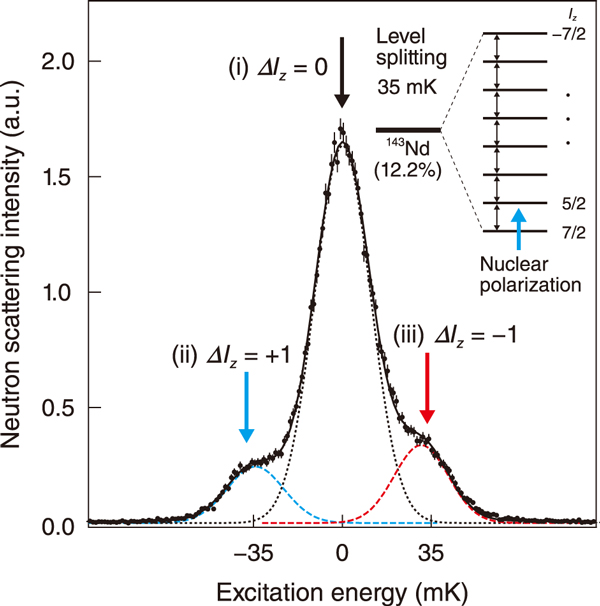
Fig.1 Temperature dependence of neutron scattering intensity

Fig.2 Hyperfine spectrum of 143Nd nuclear spin states
Magnetic moments, which are important for magnets, motors, storage devices, etc., differ in magnitude even with the same magnetic element, depending on the electronic structures of magnetic materials; hence, these moments should be measured. Neutron magnetic scattering is a powerful tool for this purpose. However, a high-quality single crystal is necessary to obtain a large data set of hundreds of diffraction intensities that are corrected appropriately. We obtained the magnetic structure and the moment magnitude after a complete structural analysis of such data. Each scattering intensity contains contributions from all atoms in a unit cell. We developed a method to measure the magnetic moment by comparing the magnetic scattering intensity with the scattering of the on-site nuclear spin polarization. We focused on a magnetic element by the on-site interference of neutron scattering from the magnetic moment and the induced nuclear spin polarization. The moment can be determined conveniently and precisely only from a single reflection; thus, no structural information is necessary in many cases. Magnetic elements can also be distinguished from the nuclear spin polarization.
The magnetic scattering intensity of Nd moment (thick red arrow) in Nd3Pd20Ge6 (neodymium-palladium-germanium) increases in the magnetically ordered phase (1) below the Neel temperature TN = 1.8 K and exhibits (2) a clear up-turn, which is the contribution from 143Nd nuclear spin polarization (blue arrow) at very low temperatures (Fig.1). The Nd moment was estimated by comparing the magnetic scattering with the nuclear spin contribution, which is known with great accuracy.
The existence of the nuclear spin polarization was confirmed by measuring the hyperfine spectra of 143Nd nuclei (natural abundance 12.2%) with a nuclear spin I = 7/2 in the magnetically ordered phase as shown in the inset of Fig.2. The three peaks in Fig.2 correspond to transitions with (i) ΔIz = 0 (black arrow) at ΔE = 0, (ii) ΔIz = +1 (blue arrow) at ΔE = −35 mK, and (iii) ΔIz = −1 (red arrow) at ΔE = +35 mK. Here, ΔIz is the change of Iz after the excitation, and ΔE is the excitation energy expressed in temperature units. The observed excitation energies of ΔE = ±35 mK for ΔIz = ±1 give the level splitting. Thus, the increase in the neutron scattering intensity as shown in Fig.1(2) at very low temperatures originates from this nuclear spin polarization.
This method can be applied for the magnetic elements with appropriate nuclear spins. It will be very interesting to expand its applications to clarify complex crystal and magnetic structures, which cannot be easily resolved by the conventional structural analysis of diffraction data. Furthermore, this method can be applied to develop magnetic materials for strong magnets and to clarify their mechanisms.
(Naoto Metoki)